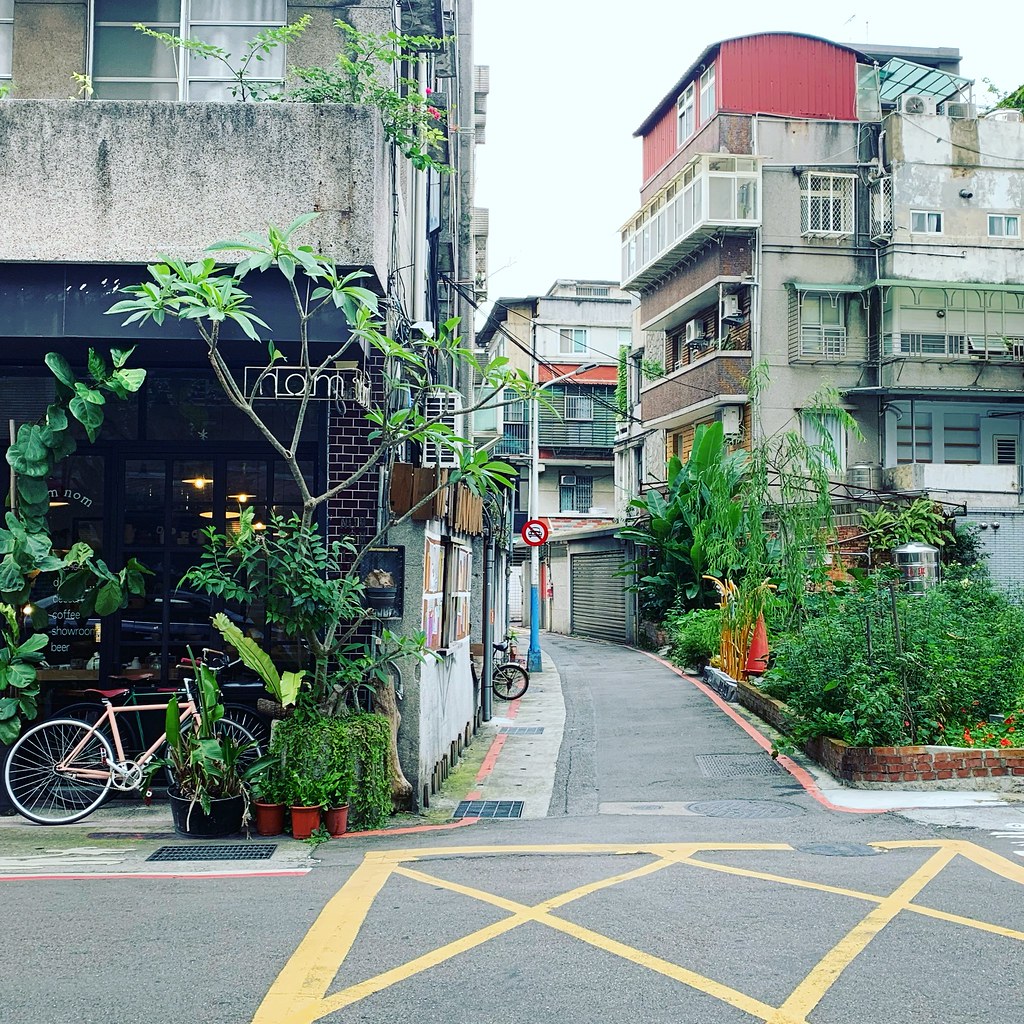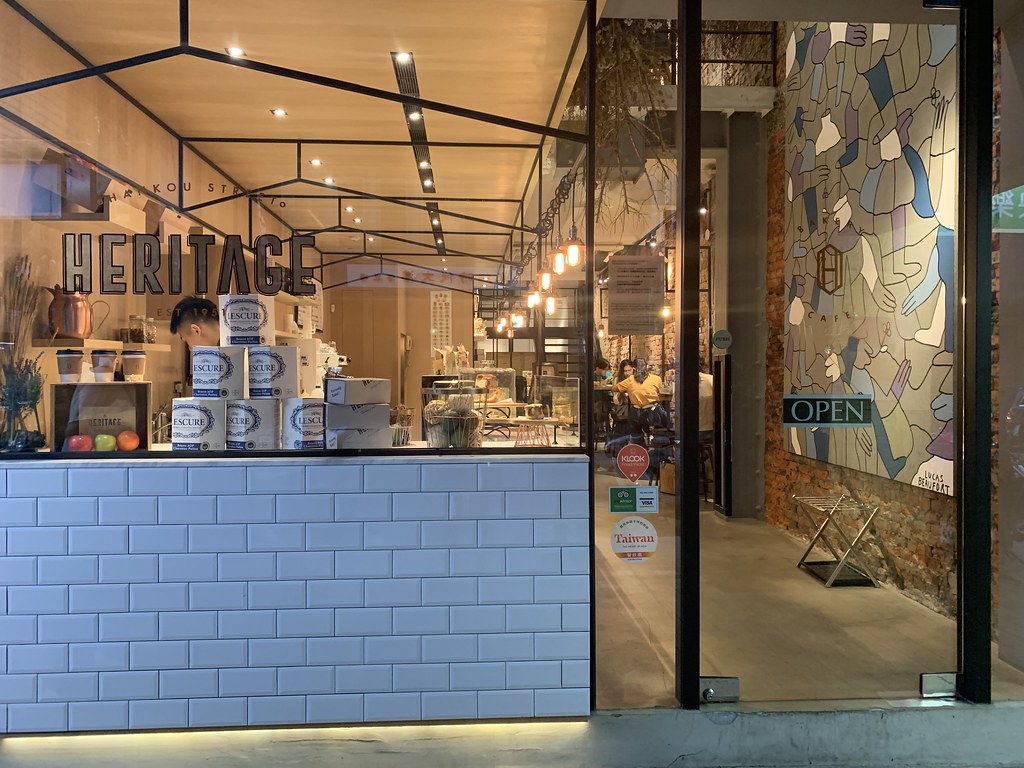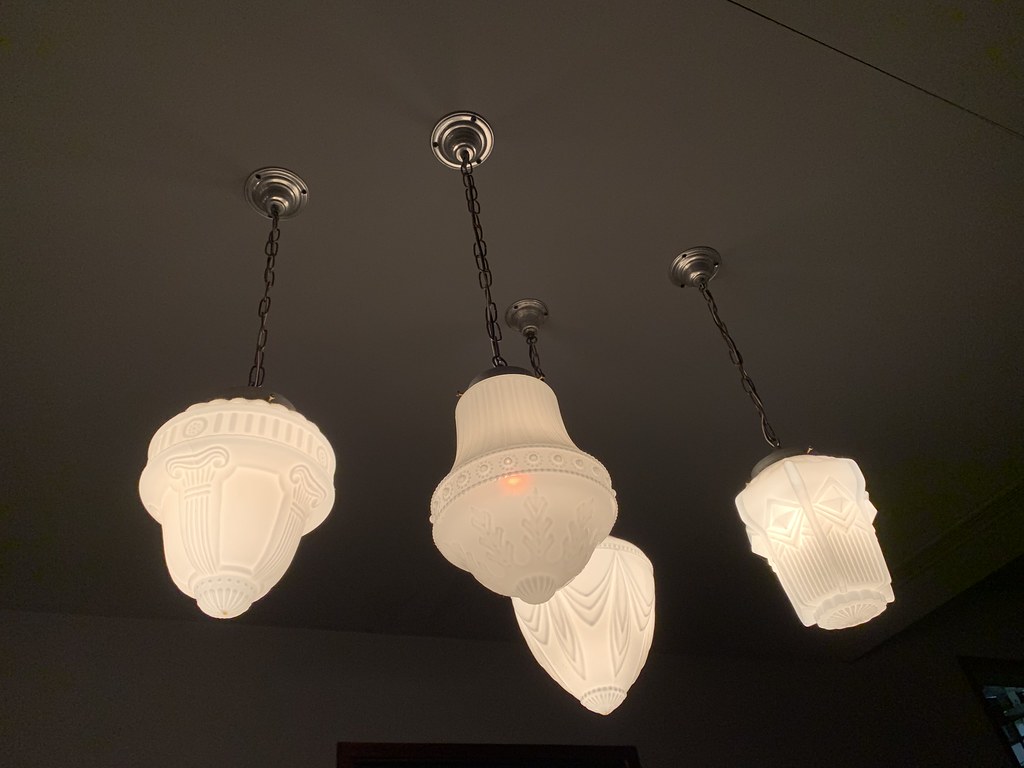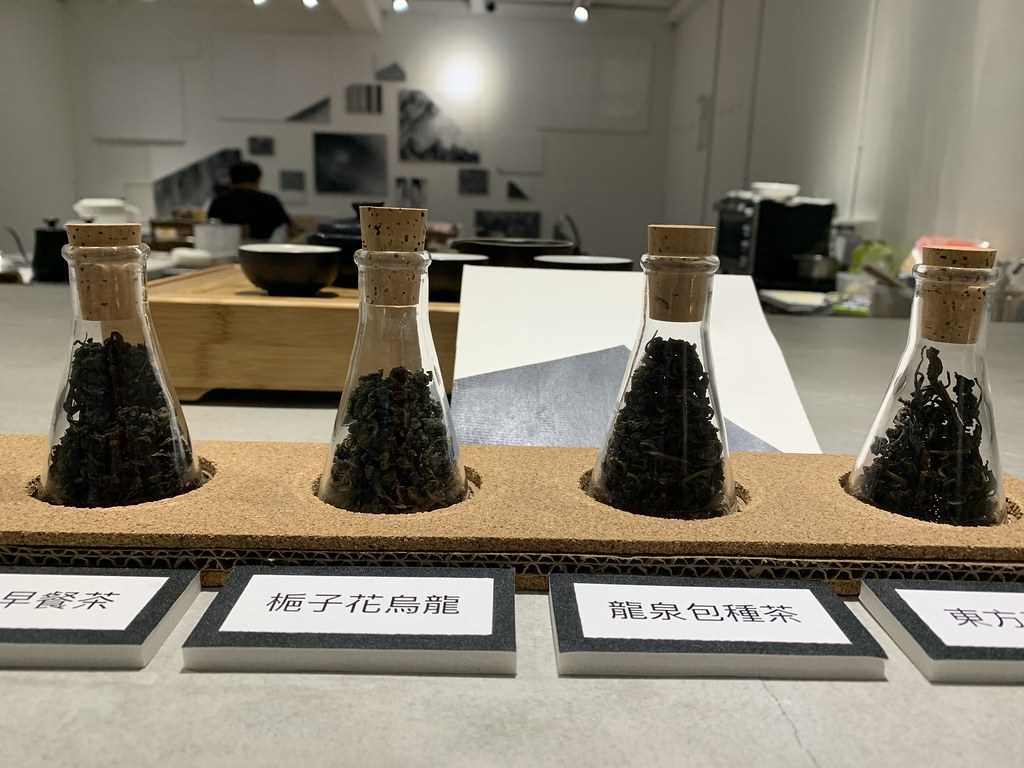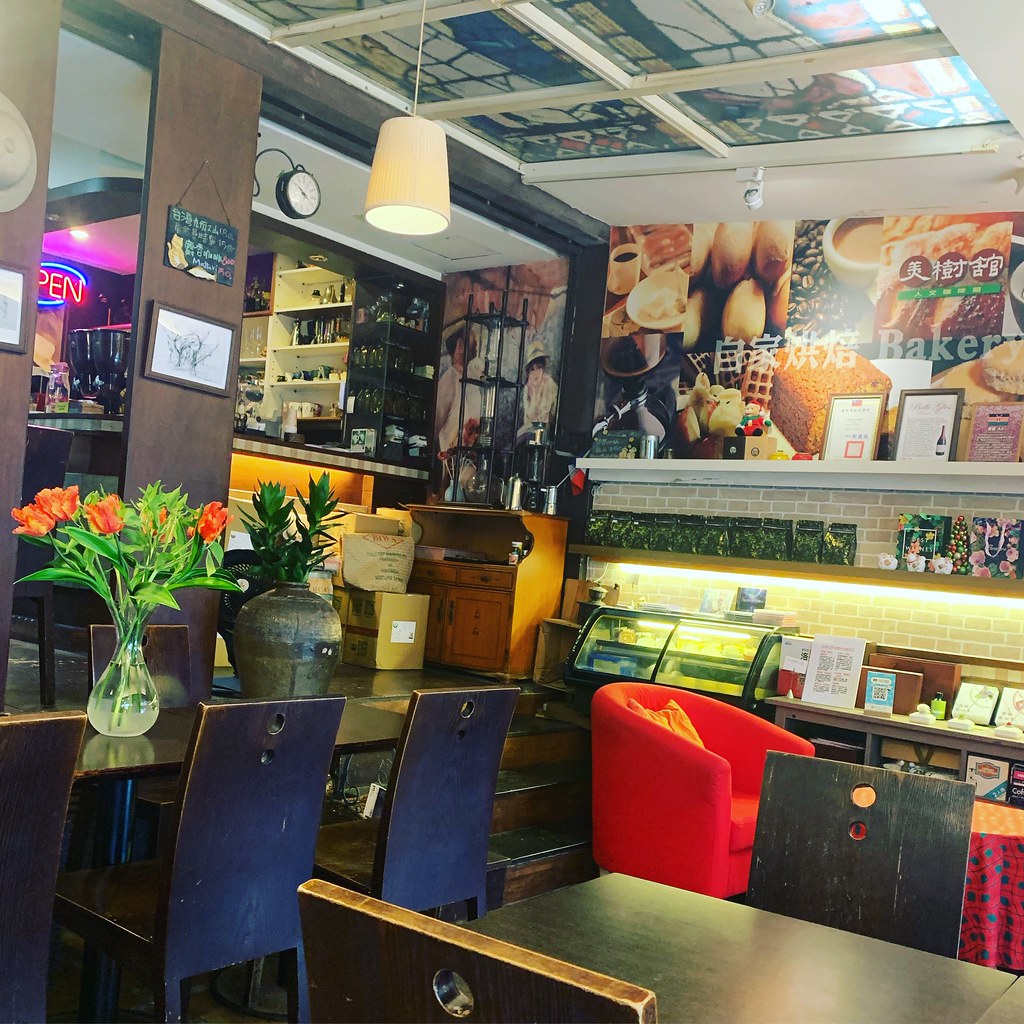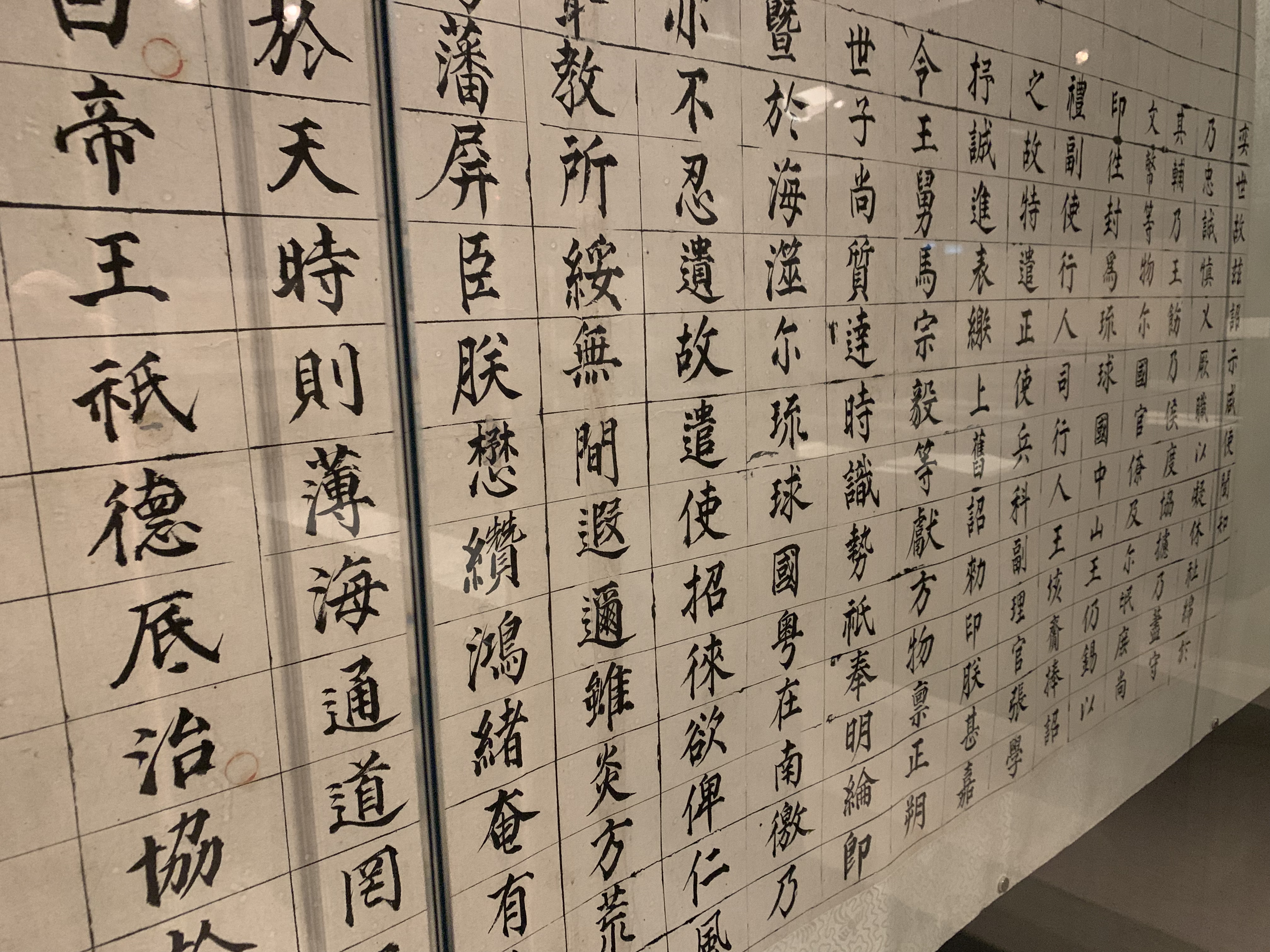
A few weeks ago, we decided to escape the scathing summer heat and check out the history museum at Academia Sinica. It's a little hard to find once on campus and far from the MRT, but also air conditioned to the point of being refrigerated (seriously, bring a jacket) and best of all, it's free!
We expected a fairly small collection and were surprised to find that the two hours we'd set aside to explore the museum was not enough to see everything - it's far larger than it looks, with lots of interconnected rooms and corridors you don't know are there until you're upon them. We never even made it to the lower level but no matter, it's a good excuse to return.
The best parts of the museum were the ones showcasing artifacts relevant to Taiwanese history, like the scroll above. Below, although a scroll announcing the capture of the Yongli Emperor (last of the Southern Ming, after a fashion) in Burma doesn't seem particularly related to Taiwan, it is. If I remember correctly, that was the emperor who gave Zheng Chenggong/Koxinga his title (Lord of the Imperial Surname), and so the Yongli Emperor's rise and fall is directly related to the events that spurred Koxinga to come to Taiwan, and for his descendants to stay on as Ming loyalists for a few generations.

Here's another one regarding sea traffic between Qing Dynasty China and Taiwan:
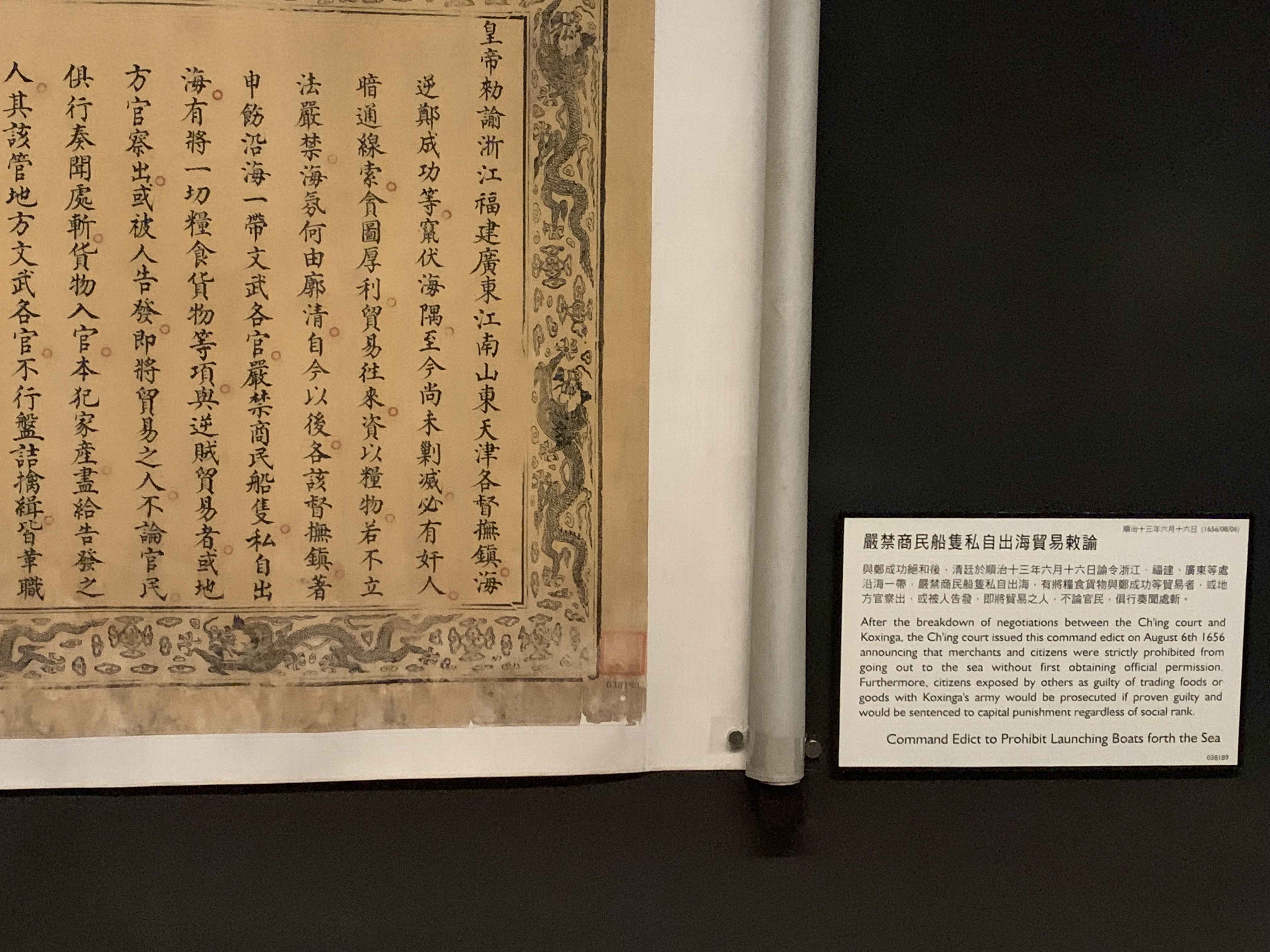
And then we have this, the explanatory plaque for the cover photo of this post:

This is a request from the "eldest son of the king of Liuqiu" for a new patent and seal, sent in 1654 to the Ming imperial court in China.
Okay, so what? You might ask.
Well, this is exactly the sort of "historical proof" that China routinely uses when making territorial claims on various islands off its coast, most notably the Senkaku islands (not the same as the Ryukyu islands, but nearby). Of course, they also claim the Ryukyu islands, including Okinawa.
This is relevant to Taiwan not only due to these islands' geographical proximity to Taiwan - some of them are actually off the coast of Taiwan, not China, including Ishigaki and Yonaguni, which are closer to Yilan in eastern Taiwan than either Japan or China. It also matters because the Republic of China (you know, that old colonialist windbag of a government currently on life support as the official government on Taiwan - yeah, that) tends to claim everything China claims. The ROC officially claims the Senkakus - Diaoyutai in Chinese - just as China does, as well as those islands in the South China Sea. I think all of that is completely ridiculous, but, anyway, it's a thing.
(As far as I know, the ROC does not claim the Ryukyu Islands, but I could be wrong.)
The museum also has a large collection of rubbings of stelae and other large engravings. Many of the original stone and metal artifacts have been lost; some I presume are still in existence somewhere in China. To be honest, although these are valuable pieces, they come from various parts of China and are not directly relevant to Taiwan. So, while I enjoyed looking at them for their aesthetic beauty, they weren't of particular historical interest to me. Which, of course, does not mean they're not worthwhile. Not everyone has a laser focus on Taiwan the way I do.
 |
| Yes, I made a joke about "full-surface rubbing". Because I'm 12. |
One of the great things about this museum is that everything is rendered in competent English. Although the National Museum of History, for example, has more artifacts from Taiwan's Austronesian past (which makes up the bulk of its history, but is often ignored due to a lack of recorded history), but no English. It's also clearly designed for adults, whereas the National Museum of History is more of a place to take your kids for the day.
On the other hand, there is a tendency in the information on items in the collection to expend way too much verbiage on the archaeological processes or techniques used to unearth the artifacts, or how the artifacts were made (see the tutorial on "full surface rubbing" above) and not nearly enough - if any - telling the stories behind the artifacts or what we can learn about history from them.
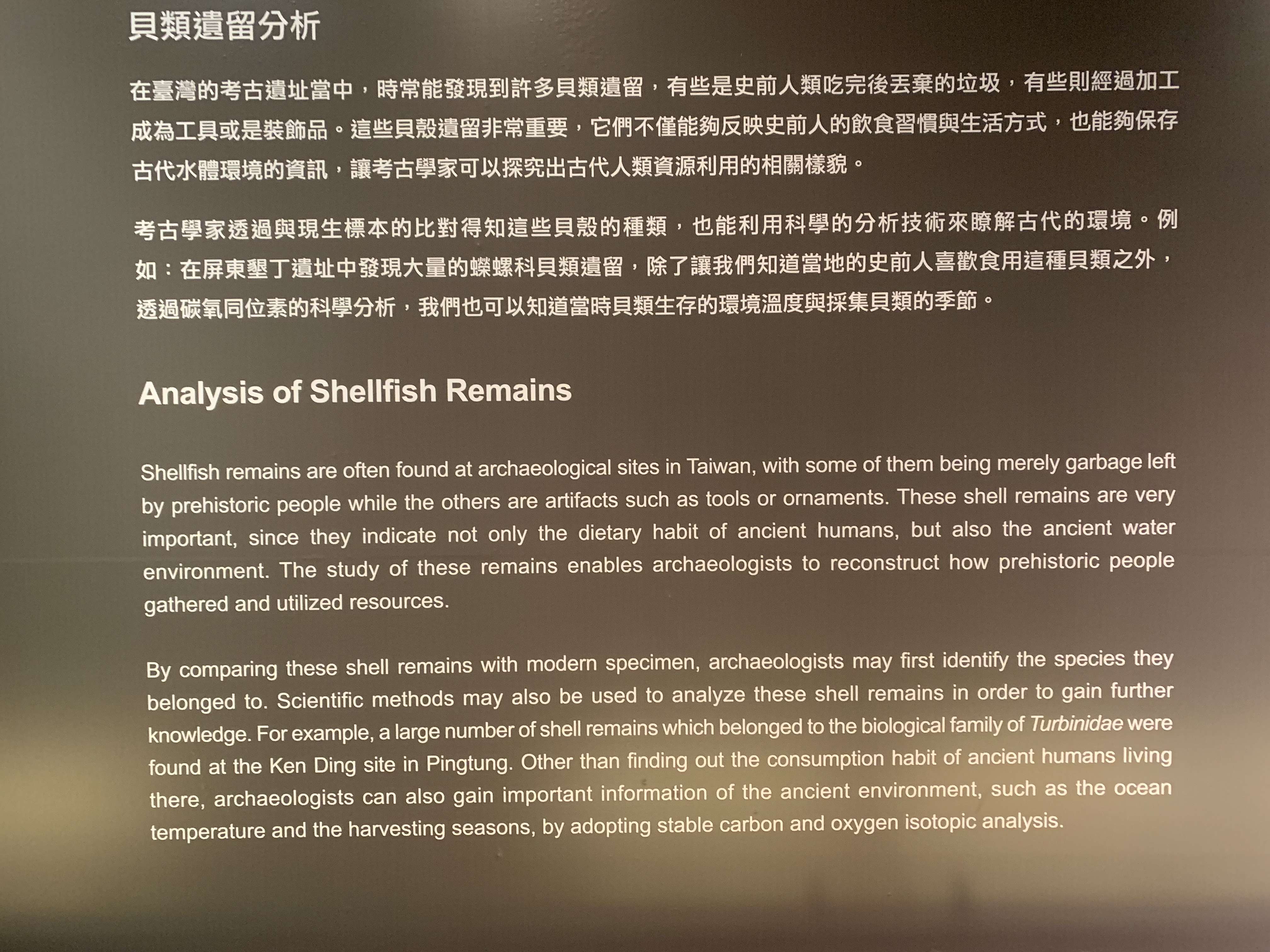
Here's a prime example. We learn what kind of shells these were (the shells themselves are not very photogenic), and why they matter, but we don't learn anything about the bits that are actually interesting: what kinds of ornaments and tools were they and what were they used for? What were the consumption habits of ancient Austronesians living in Taiwan? What was the ancient environment like, and what were the harvesting seasons? All we learn are that archaeologists have ways of finding these things out, but we never get to read about what they learned.
The most egregious example of this - and I wish I'd taken a photo - was an ancient scroll described as having something to do with some 'lama drama' in Tibet. I don't remember exactly, but it briefly mentioned that one lama could no longer be lama and was stepping down, and another lama would take his place, all written to the imperial court.
Cool, but it seems like there's a real story there! What happened? Why'd the first lama step down? That would be an interesting thing to know, and also an engaging narrative to really get visitors interested in the colorful history behind these items, but we never find out.
Here's another:

Interesting! What was the discrepancy? Do we know why? Any hypotheses? Also, who are Kao Lishi, Pan Yan and Zhang Shaoti, and why do they matter?
We never find out.

I'd also be interested in knowing more about the cultural underpinnings behind the use of human teeth as ornaments.
But, we don't learn that either. We do learn quite a bit about how archaeologists unearth all of this stuff, though.
This is a minor complaint, however. If even that - more a kind suggestion that perhaps there are more engaging ways to put together a museum collection, which it would be fully within Academia Sinica's ability to implement. Think about it, guys?
If you thought that was critical, wait 'til you hear what I've got to say below.
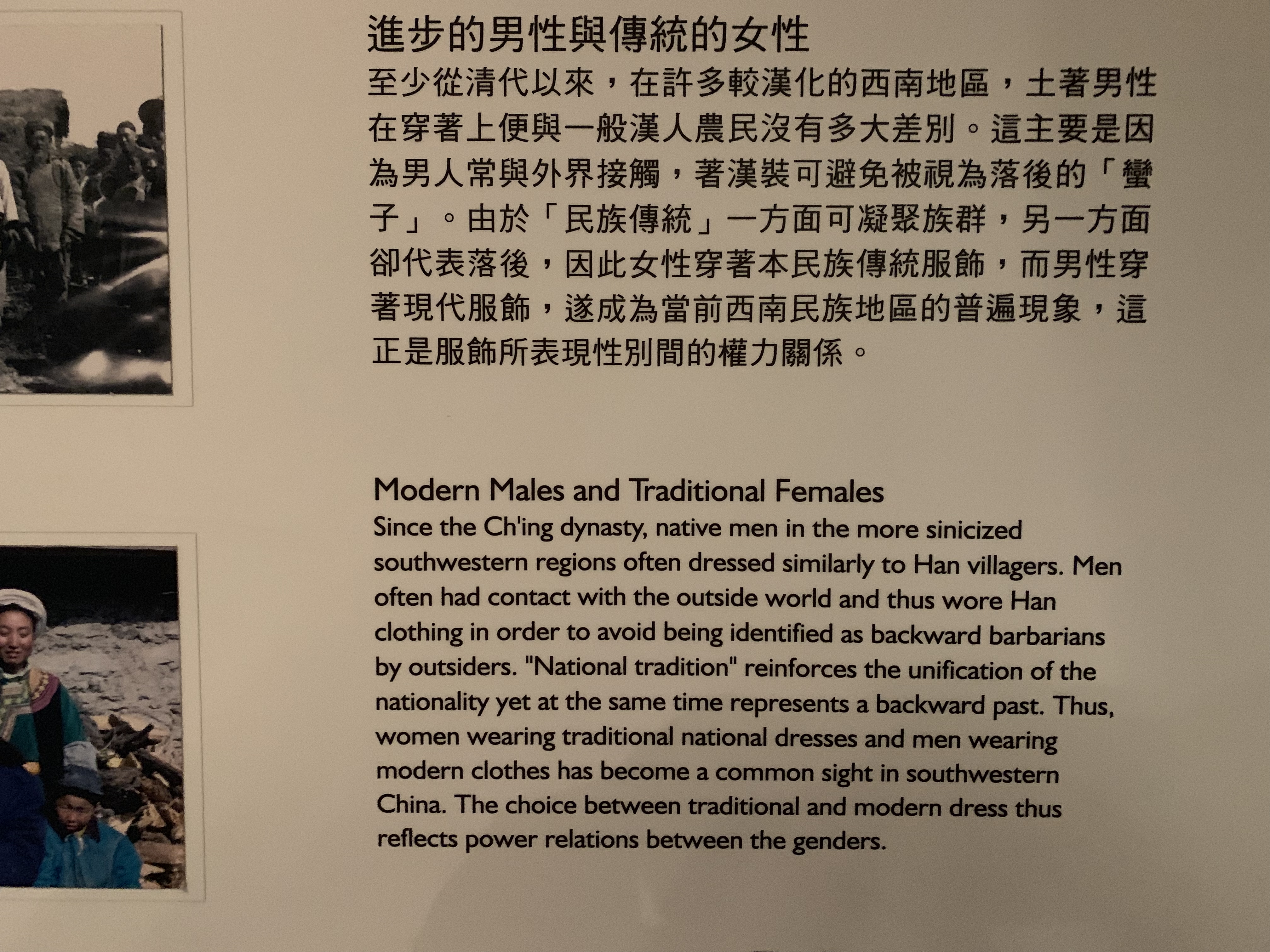
I already knew that in minority communities in China, the men tend to dress in ways that imitate the dominant group (that is, Han Chinese) whereas women are more likely to wear their traditional clothing, because men were more likely to leave their villages and mingle with society at large, and would want or need to 'fit in'. These days, that means men from these communities in China are more likely to dress in Western clothing, but women might not. In fact, here are some of my old photos from my life in Guizhou, China, when I went traveling in the countryside:


I'm sorry they're not that clear - I only have hard copies. A friendly local in Kaili offered to accompany me on my travels and helped with translation, so all of these photos were taken with the permission of the subjects.
What bothers me is this:
"'National tradition' reinforces the unification of nationality yet at the same time represents a backward past."
Excuse me, but what?
I get the notion that the dominant group - Han Chinese - often view minority communities as "backward" but what's up with saying that in a way that takes it at face value, rather than interrogating it? Why would you drop that word in there as though it's a legitimate way of describing the cultures and histories of these groups?
The same goes for "the unification of nationality". "National tradition" in China only exists as it does because the authoritarian government there decided it would be that way. They decided to promote the notion of all citizens of China as Chinese, sharing the same blood, language, traditions etc. They - not some amorphous, societally-agreed-on force - decided to treat 'ethnic minorities' like adorable living museum exhibits with cool costumes, existing mostly as people the government can point to and say "see! China is tolerant and diverse!" while treating them in very intolerant and marginalizing ways. Or, if not that, as entertainment for domestic tourists who show up as visitors to their festivals and surround them with audio-visual equipment without their consent.
That's not "national tradition", it's a form of cultural assault. Come on Academia Sinica, how are you not even questioning it or highlighting how problematic it is?
And that's not getting into how none of the clothing of minority groups on display looked particularly similar to what I saw in China - I'm willing to let that be, as a lot of those groups are actually quite differentiated, and dress styles may vary even between nearby valleys, let alone longer distances.
If you think that was a one-off, poorly-translated information panel, get a load of this:
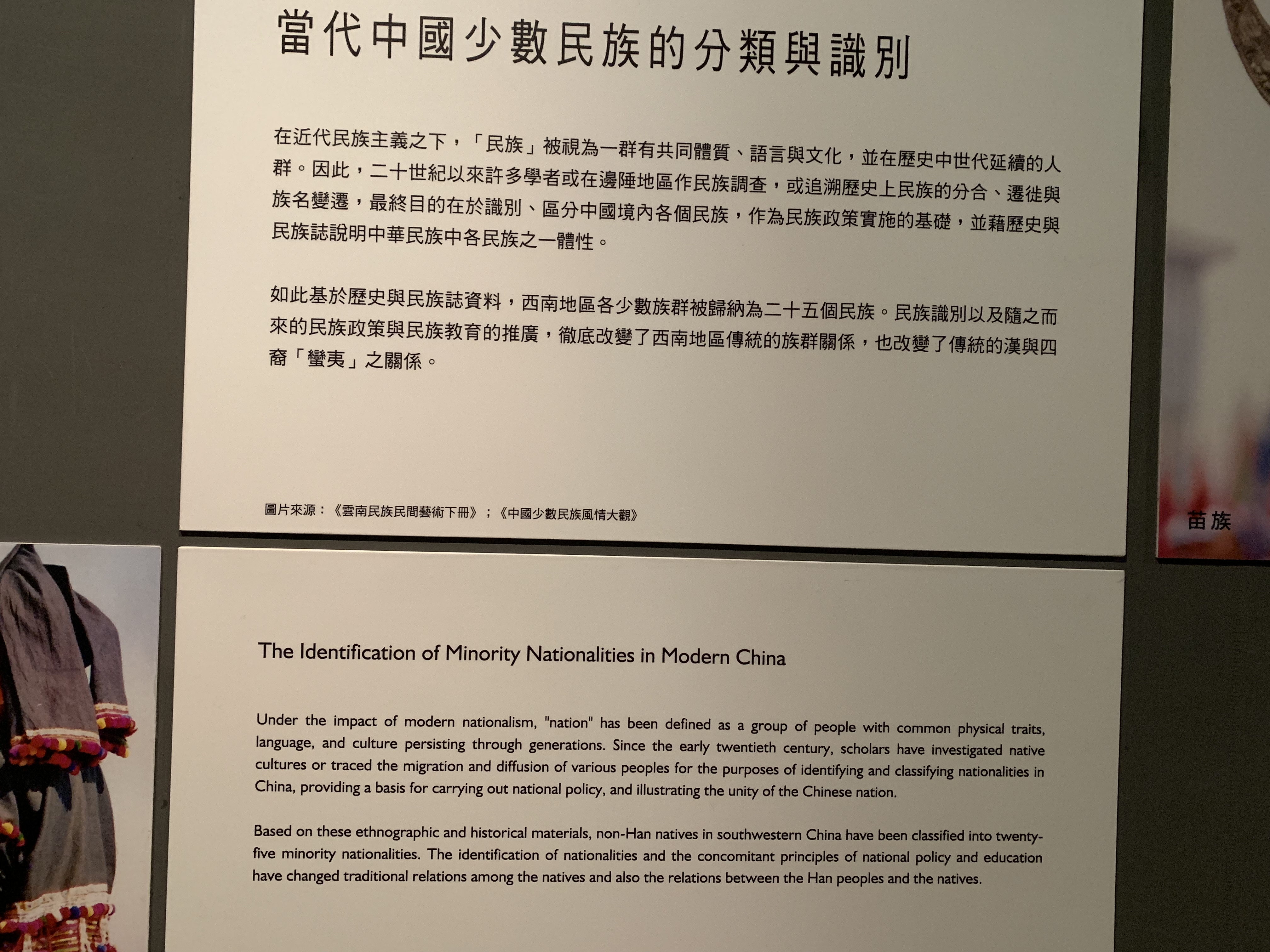
It says:
Under the impact of modern nationalism, 'nation' has been defined as a group of people with common physical traits, language and culture persisting through generations. Since the early twentieth century, scholars have investigated native cultures or traced the migration and diffusion of various peoples for the purposes of identifying and classifying nationalities in China, providing a basis for carrying out national policy, and illustrating the unity of the Chinese nation.
Based on ethnographic and historical materials, non-Han natives in southwestern China have been classified into twenty-five minority nationalities. The identification of nationalities and the concomitant principles of national policy and education have changed traditional relations among the natives and also the relations between the Han peoples and the natives.
I just...excuse me? The Chinese doesn't seem much better to me, but a native-speaking friend looked it over and said the Chinese is, in fact, more acceptable, but still. Excuse me?
First, I'm not sure calling them 'natives' is a great idea. Don't we have words with fewer negative connotations? "Indigenous", perhaps?
Second, "common physical traits"? If by "modern nationalism" you mean the kind of ethnocentric nationalism that got us into world wars a century ago, sure. But these days we can talk about nationalism as a shared cultural and historical identification - which can include immigrants who come to identify as part of that society - or perhaps as a group of people with shared values and principles of how they'd like to exercise self-determination. So I really don't know what to say there. I have a friend who doesn't share "common physical traits" with Taiwanese who nevertheless is a citizen of Taiwan now. There is a pathway - albeit a narrow one - for me to become a citizen someday as well, and it is not possible to look less Taiwanese than me. Taiwanese themselves don't have that many "common physical traits" - having backgrounds from Indigenous to Han Chinese to non-Han Chinese to modern Southeast Asian and beyond - unless you think all Asians are the same (they're not, and indigenous Taiwanese are Pacific Islander anyway.)
In any case, that sounds like making an argument for biology determining political destiny and I'm sorry, that's just not on.
And no, saying so is not a "Western" idea. Taiwan is diverse and multicultural too. Always has been. The same is true for China. Plenty of Taiwanese, including indigenous Austronesian Taiwanese, Southeast Asian immigrants who have married and settled here, Hakka who have also been historically discriminated against and a good number of 'dominant' Han Chinese have been pushing for more acknowledgement of Taiwan as a nation bound by shared identity and cultural and political values. That's coming from them, not 'the West'.
Third, and most importantly, is Academia Sinica really justifying the study of minority cultures in order to enact national policy that seeks to assimilate those cultures? To either turn them into groups who willingly subject themselves to being seen as costumed, dancing entertainment for Han Chinese, or to eviscerate their cultural heritage altogether in the name of "national unity"?
Because seriously, that sounds like something the Communist Party of China would write, and it's really not cool. Taiwan doesn't need to have museums with exhibits that follow the same ethnocentric, jingoistic, nationalistic, supremacist garbage logic that the Chinese government puts out.
I don't think Academia Sinica is intentionally writing supremacist placards for their museum collection. Either it's a failure of English translation, or they are in dire need of updating but nobody's really taken that on. In any case, it's time to do some updating. Imagine if a foreign visitor who can't read the Chinese or doesn't have a well-connected local friend to discuss these things with goes to this museum and reads the English here - what will they think? That the English doesn't clearly express the sentiments of Academia Sinica, or that Academia Sinica has supremacist views on indigenous peoples?
We can, and must, do better.




